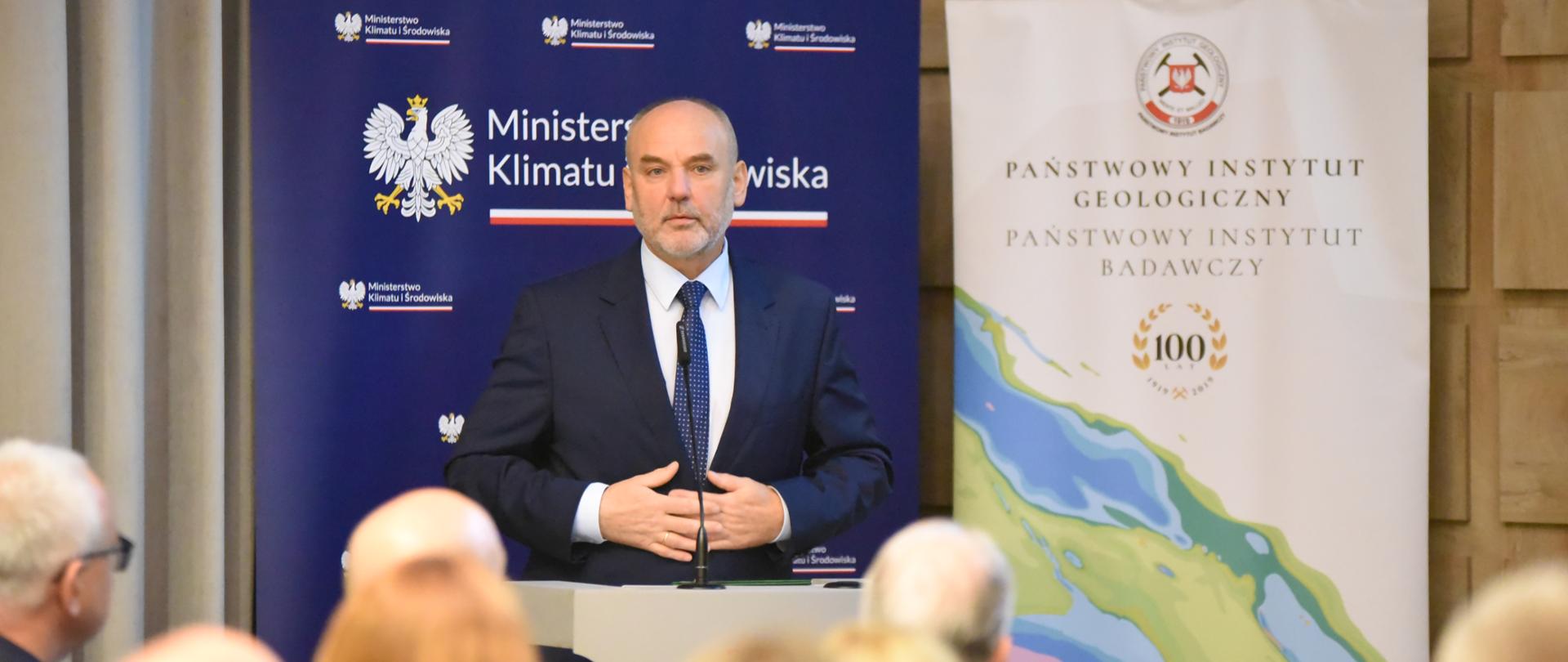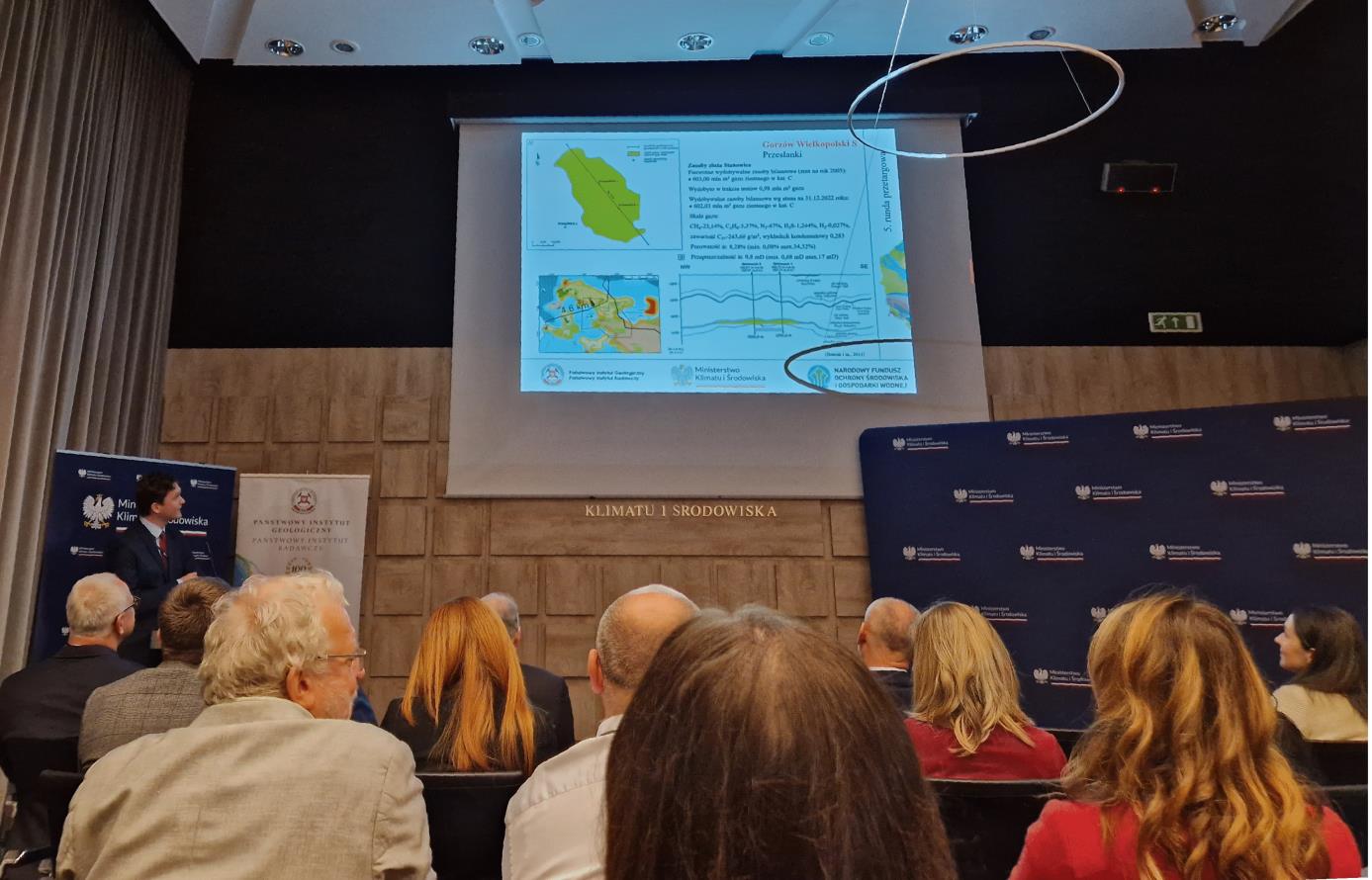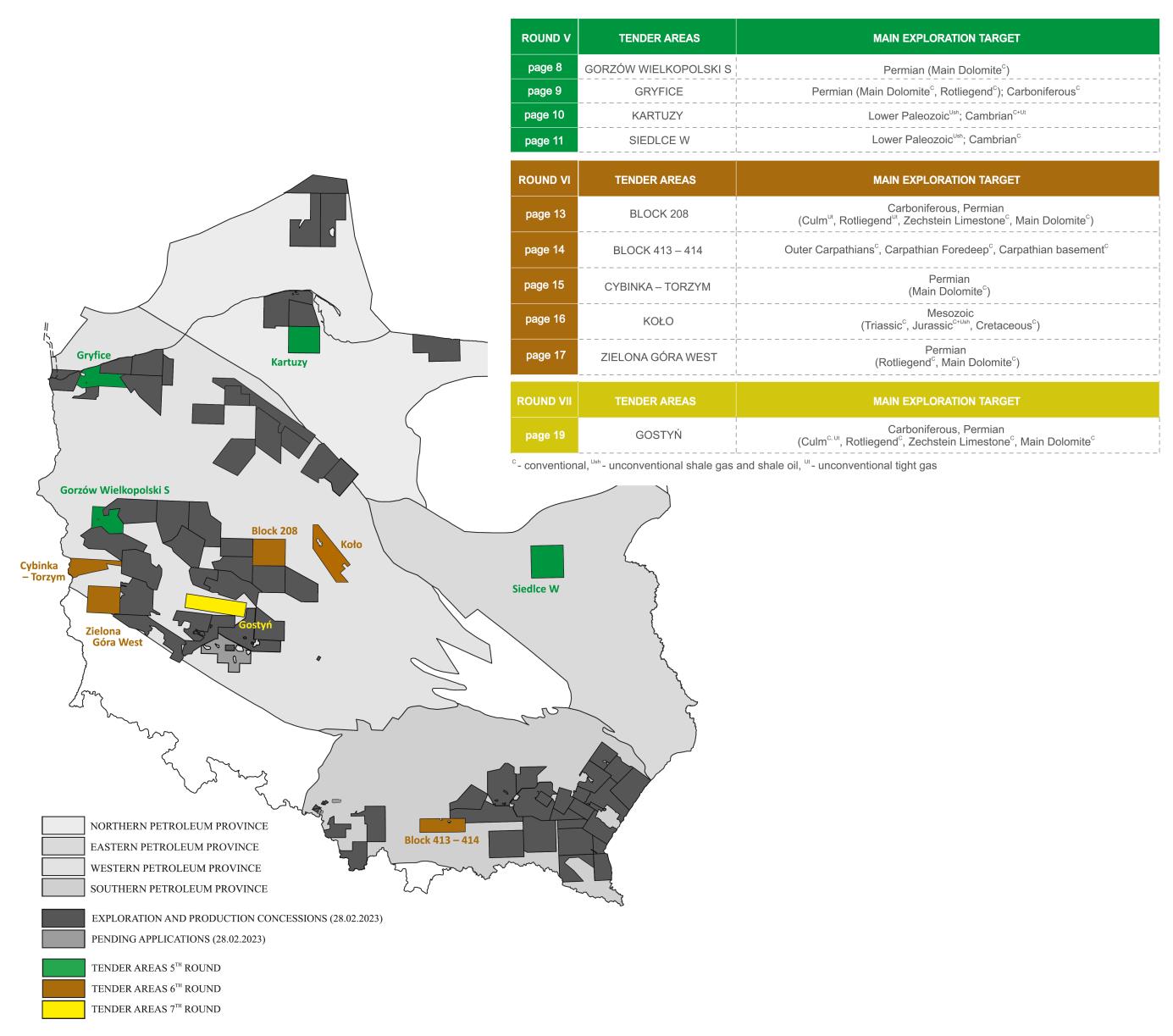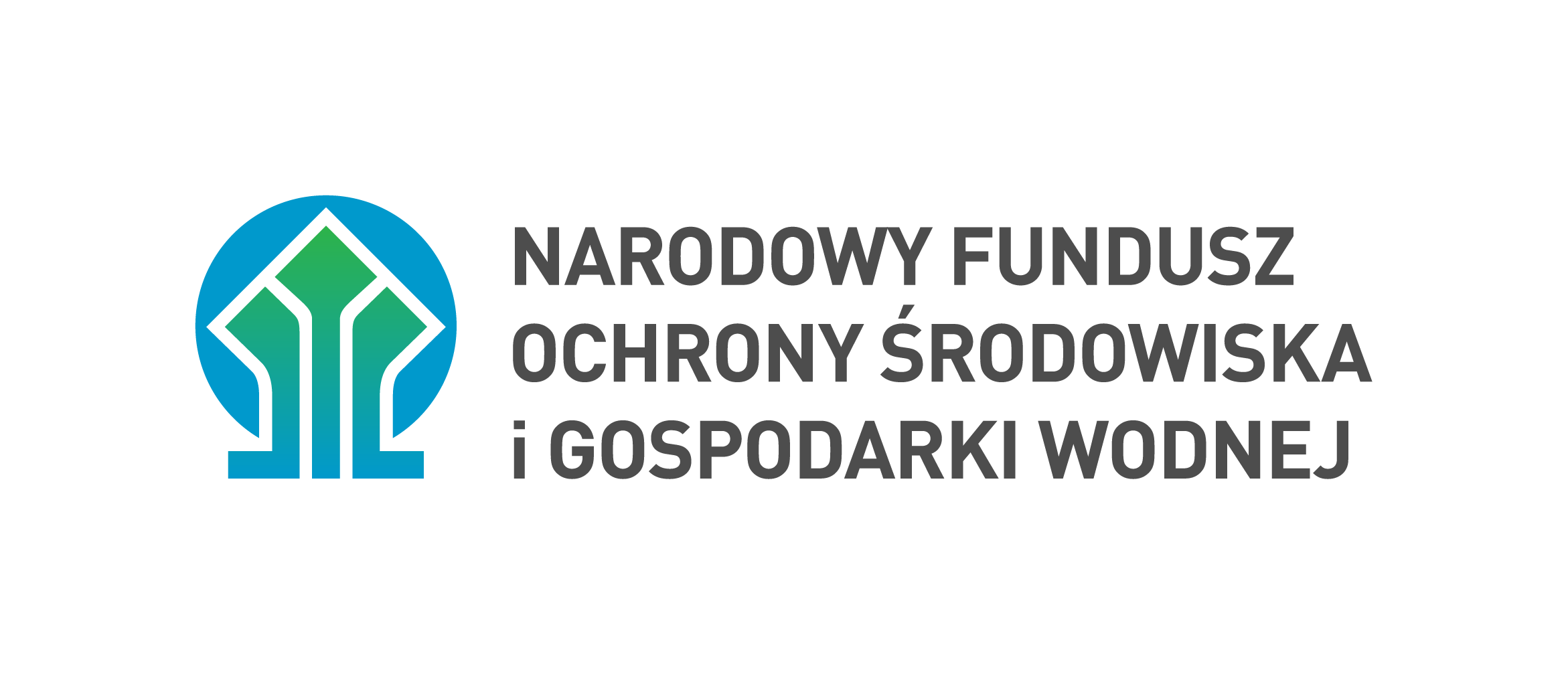 The Department of Geology and Licensing of the Ministry of Climate and Environment and the Polish Geological Institute – National Research Institute hosted the third conference from the series 'Oil and gas in Poland: prospective areas and tender proceedings in 2023 and 2024'.
The Department of Geology and Licensing of the Ministry of Climate and Environment and the Polish Geological Institute – National Research Institute hosted the third conference from the series 'Oil and gas in Poland: prospective areas and tender proceedings in 2023 and 2024'.
The conference took place on 2 October 2023, and was held under the patronage of dr Piotr Dziadzio – Chief National Geologist, Undersecretary of State, Government Plenipotentiary for the State's Raw Materials Policy, and dr inż. Mateusz Damrat – Director of PGI-NRI.
The conference was addressed primarily to investors operating on the Polish oil and gas market, scientific institutions, the financial sector and state administration bodies, as well as to employees of diplomatic missions – seeking the interest of foreign entrepreneurs.
The conference brought together more than seventy specialists. Among those who honoured us with their presence were representatives of the embassies of Great Britain, Slovakia, Italy and Hungary, oil companies - ORLEN S.A., LOTOS Petrobaltic S.A., Central European Petroleum Ltd, PetroleFinder LLC, Tarczyński Gaz Sp. z o.o., as well as financial institutions, law firms, the Supreme Audit Office, the National Fund for Environmental Protection and Water Management and departments of the Ministry of Climate and Environment.
The conference was opened by Piotr Dziadzio – Chief National Geologist, Undersecretary of State, Government Plenipotentiary for the State's Raw Materials Policy, who also gave the introductory word.
The first purpose of the conference was to present information on the modes of granting hydrocarbon licenses in Poland in the context of the amendment to the Act of 16 June 2023 Geological and Mining Law. Already at the outset, the Chief National Geologist stressed that this amendment would help to improve the economic viability of CCS projects – it will eliminate barriers to the development of underground carbon dioxide storage activities through the possibility of combining injection into the reservoir to increase its pressure (intensification of hydrocarbon extraction) with underground CO2 storage activities.
Then representatives of the Department of Geology and Licensing familiarized the participants with the modes of granting hydrocarbon licenses in our country, including the requirements that should be met by entrepreneurs applying for them, as well as the schedule of the fifth, sixth and seventh rounds of tenders, the advantages and limitations of the open door procedure, as well as the issue of fees related to the granting and servicing of licenses.

Piotr Dziadzio – Chief National Geologist, Undersecretary of State, Government Plenipotentiary for the State's Raw Materials Policy
It should be made clear at this point that there are two ways of granting hydrocarbon licenses in Poland. The first is a tender organized annually by the minister in charge of the environment, during which licenses are granted only for areas indicated as prospective (based on the assessment of oil prospectivity carried out by PGI-NRI and the Department of Geology and Licensing) in terms of the possibility for documenting new hydrocarbon deposits.
The second way is the open door tender, in which the entrepreneur has more freedom to direct his/her exploration, independently indicating the area of future exploration and prospecting and/or exploitation activities. However, it cannot be an area covered by an existing license or tender, or even planned for tender. Its area also cannot exceed 1,200 km2.
During the conference, the areas dedicated to the next rounds of tenders organised by the Licensing Authority (i.e., under the first hydrocarbon licensing mode) were presented in two thematic blocks. PGI-NRI employees: Joanna Roszkowska-Remin, Marcin Łojek and Hubert Kiersnowski presented information about the four areas dedicated to the fifth round of tenders, for which the call for proposals is currently underway. These areas are:
- Kartuzy and Siedlce W, prospective for the presence of conventional and unconventional hydrocarbon deposits (including shale gas in particular) in lower Palaeozoic formations,
- Gryfice – dedicated to prospecting for conventional deposits in Carboniferous and Permian formations (Red Bedrock and Main Dolomite),
- Gorzów Wielkopolski S – particularly promising for deposits in the Main Dolomite.

Marcin Łojek from the Department of Reservoir and Economic Geology of PGI-NRI talked about the oil prospects in the Gorzów Wielkopolski S tender area, dedicated to the fifth round of tenders for hydrocarbon licences in Poland
The second thematic block was devoted to the tender areas of the sixth and seventh round, which are scheduled to start in 2024. Our employees Adam Wójcicki, Urszula Meissner, Krystian Wójcik, Rafał Laskowicz, Hubert Kiersnowski and Marek Jasionowski presented information about the oil prospects of the areas:
- Block 208 (in the Carboniferous, Permian Red Bedrock, Zechstein Limestone and Main Dolomite),
- Koło (in the Mesozoic of the Polish Lowlands),
- Cybinka-Torzym and Zielona Góra West (in Permian – Main Dolomite),
- Block 413-414 (in the Carpathian basement, the Carpathian Foredeep, the Outer Carpathians),
- Gostyń (in Permian Red Bedrock, Zechstein limestone and Main Dolomite).

Location and main exploration target of areas dedicated to the fifth, sixth and seventh rounds of tenders for hydrocarbon licences in Poland in 2023 and 2024
Detailed information on areas dedicated to subsequent tender rounds for hydrocarbon licences in Poland has been compiled in individual geological data packages prepared by the Polish Geological Institute - PGI in Polish and English language versions. Those interested will be able to find in them information on geology, petroleum systems, deposits, boreholes, seismic or other geophysical methods used in areas offered for tenders.
They are made available systematically with the commencement of successive tender rounds – under the tab GEOLOGICAL DATA PACKAGES on www.pgi.gov.pl/obszary-przetargowe.html, and also in the Public Information Bulletin of the Ministry of Climate and Environment on bip.mos.gov.pl/koncesje-geologiczne/przetargi-na-koncesje-na-poszukiwanie-rozozpoznawanie-i-wydobjedywanie-weglowodorow.
Entrepreneurs may also familiarise themselves free of charge with the geological information about the tendered areas, which is systematically made available through the DATA ROOM organised in the National Geological Archives NGA (Polish Geological Institute – PGI, Rakowiecka 4, 00-975 Warszawa, room 1s; every Monday throughout the tender period, after prior notification to: This email address is being protected from spambots. You need JavaScript enabled to view it., or by phone: +48 22 45 92 501).
In digital projects, borehole geophysics (in Interactive Petrophysics software), seismic (in Petrel) and geological (in GIS) data were collected, as well as the results of petrophysical and geochemical studies in boreholes. Borehole resultant documentation has also been prepared, as well as seismic and reservoir documentation, available in electronic form.
We hope that you have found our meeting and discussions interesting and that they will result in the discovery of new oil and gas deposits in Poland.
Text: Krystian Wójcik
Photos: Ewelina Krzyżak, MKiŚ















 PGI-NRI offer
PGI-NRI offer Mineral resources of Poland
Mineral resources of Poland  Oil and Gas in Poland
Oil and Gas in Poland 




 Subscribe to RSS Feed
Subscribe to RSS Feed